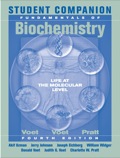
Concept explainers
(a)
To determine: Whether a glove is chiral or nonchiral.
Introduction: Chirality is the phenomenon in which a molecule is not superimposable mirror image to each other. It is also known as asymmetric centers. A carbon atom attached with four different groups is chiral. The amino acid (except glycine) shows chirality because a central carbon atom is attached with four different groups. Glycine is a symmetrical or achiral because the central carbon is not attached with four different groups. A chiral molecule has handedness.
(b)
To determine: Whether a tennis ball is chiral or nonchiral.
Introduction: Chirality is the phenomenon in which a molecule is not superimposable mirror image to each other. It is also known as asymmetric centers. A carbon atom attached with four different groups is chiral. The amino acid (except glycine) shows chirality because a central carbon atom is attached with four different groups. Glycine is a symmetrical or achiral because central carbon is not attached with four different groups. A chiral molecule has handedness.
(c)
To determine: Whether a screw is chiral or nonchiral.
Introduction: Chirality is the phenomenon in which a molecule is not superimposable mirror image to each other. It is also known as asymmetric centers. A carbon atom attached with four different groups is chiral. The amino acid (except glycine) shows chirality because a central carbon atom is attached with four different groups. Glycine is a symmetrical or achiral because central carbon is not attached with four different groups. A chiral molecule has handedness.
(d)
To determine: Whether this page is chiral or nonchiral.
Introduction: Chirality is the phenomenon in which a molecule is not superimposable mirror image to each other. It is also known as asymmetric centers. A carbon atom attached with four different groups is chiral. The amino acid (except glycine) shows chirality because a central carbon atom is attached with four different groups. Glycine is a symmetrical or achiral because central carbon is not attached with four different groups. A chiral molecule has handedness.
(e)
To determine: Whether a snowflake is chiral or nonchiral.
Introduction: Chirality is the phenomenon in which a molecule is not superimposable mirror image to each other. It is also known as asymmetric centers. A carbon atom attached with four different groups is chiral. The amino acid (except glycine) shows chirality because a central carbon atom is attached with four different groups. Glycine is a symmetrical or achiral because central carbon is not attached with four different groups. A chiral molecule has handedness.
(f)
To determine: Whether a spiral staircase is chiral or nonchiral.
Introduction: Chirality is the phenomenon in which a molecule is not superimposable mirror image to each other. It is also known as asymmetric centers. A carbon atom attached with four different groups is chiral. The amino acid (except glycine) shows chirality because a central carbon atom is attached with four different groups. Glycine is a symmetrical or achiral because central carbon is not attached with four different groups. A chiral molecule has handedness.
(g)
To determine: Whether a shoe is chiral or nonchiral.
Introduction: Chirality is the phenomenon in which a molecule is not superimposable mirror image to each other. It is also known as asymmetric centers. A carbon atom attached with four different groups is chiral. The amino acid (except glycine) shows chirality because a central carbon atom is attached with four different groups. Glycine is a symmetrical or achiral because central carbon is not attached with four different groups. A chiral molecule has handedness.
Trending nowThis is a popular solution!

Chapter 4 Solutions
EBK STUDENT COMPANION TO ACCOMPANY FUND
 BiochemistryBiochemistryISBN:9781319114671Author:Lubert Stryer, Jeremy M. Berg, John L. Tymoczko, Gregory J. Gatto Jr.Publisher:W. H. Freeman
BiochemistryBiochemistryISBN:9781319114671Author:Lubert Stryer, Jeremy M. Berg, John L. Tymoczko, Gregory J. Gatto Jr.Publisher:W. H. Freeman Lehninger Principles of BiochemistryBiochemistryISBN:9781464126116Author:David L. Nelson, Michael M. CoxPublisher:W. H. Freeman
Lehninger Principles of BiochemistryBiochemistryISBN:9781464126116Author:David L. Nelson, Michael M. CoxPublisher:W. H. Freeman Fundamentals of Biochemistry: Life at the Molecul...BiochemistryISBN:9781118918401Author:Donald Voet, Judith G. Voet, Charlotte W. PrattPublisher:WILEY
Fundamentals of Biochemistry: Life at the Molecul...BiochemistryISBN:9781118918401Author:Donald Voet, Judith G. Voet, Charlotte W. PrattPublisher:WILEY BiochemistryBiochemistryISBN:9781305961135Author:Mary K. Campbell, Shawn O. Farrell, Owen M. McDougalPublisher:Cengage Learning
BiochemistryBiochemistryISBN:9781305961135Author:Mary K. Campbell, Shawn O. Farrell, Owen M. McDougalPublisher:Cengage Learning BiochemistryBiochemistryISBN:9781305577206Author:Reginald H. Garrett, Charles M. GrishamPublisher:Cengage Learning
BiochemistryBiochemistryISBN:9781305577206Author:Reginald H. Garrett, Charles M. GrishamPublisher:Cengage Learning Fundamentals of General, Organic, and Biological ...BiochemistryISBN:9780134015187Author:John E. McMurry, David S. Ballantine, Carl A. Hoeger, Virginia E. PetersonPublisher:PEARSON
Fundamentals of General, Organic, and Biological ...BiochemistryISBN:9780134015187Author:John E. McMurry, David S. Ballantine, Carl A. Hoeger, Virginia E. PetersonPublisher:PEARSON





